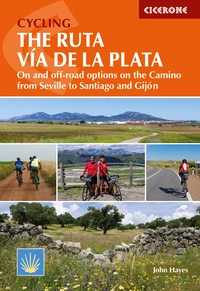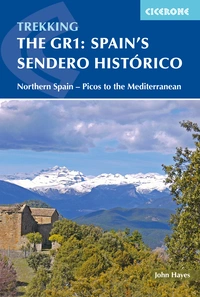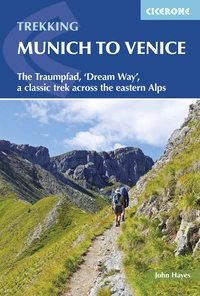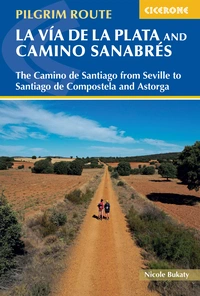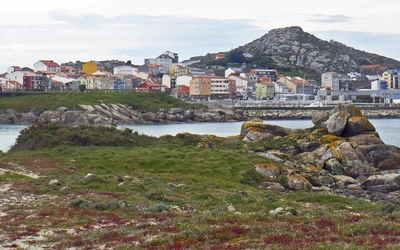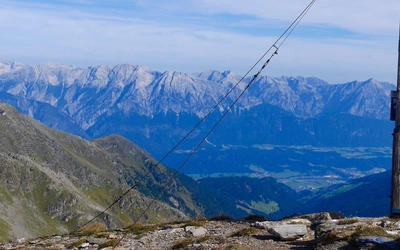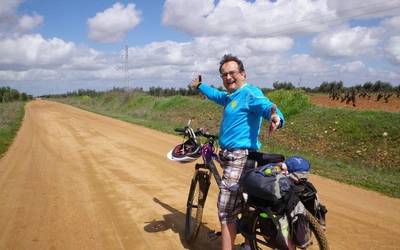Cycling the Vía de la Plata
The Vía de la Plata is one of the great Camino routes to Santiago de Compostela. Cicerone author John Hayes set about cycling the route. Here, he describes the history and culture of the region as well as giving some planning and logistics tips.
I’m a huge fan of Spain. I love its people and its food. It’s a fascinating country packed with art, culture and history and I’ve spent many months walking across it from west to east and from south to north.
This year I did something different and, instead of walking, I put my bike on a plane to Seville and cycled north along the Vía de la Plata to Gijón and the coast. It was fabulous.
Although I’ve always had a bike, it’s only in the last three or four years that I’ve started to cycle ‘seriously’. Last year I went from Montpellier to Caen using the French ‘Vélo’ network, and I’ve also clocked up hundreds of miles on the Sustrans cycle routes back in the UK – which have less infrastructure, but are equally wonderful.
While Spain doesn’t have either Sustran trails or Véloroutes – both of which often use canal paths and abandoned railway lines – it has a relatively empty countryside. It also has the best transport infrastructure in Europe, and its new network of intercity motorways and rail connections mean that the local roads are virtually traffic free. It is a biker’s paradise.
Cycling the Ruta Via de la Plata
On and off-road options on the Camino from Seville to Santiago and Gijon
£16.95
Guidebook to cycling the Ruta Via de la Plata through western Spain, covering the 924km route from Seville to the coastal city of Gijón and a pilgrimage variant to Santiago de Compostela. With road and off-road alternatives (the latter suitable for gravel bikes), the route offers fantastic cycling and rich cultural and historical interest.
More information
2000 years old
The Vía de la Plata is perhaps Spain’s oldest route, older even than the more famous Camino de Santiago. Although the route existed before the Romans arrived, they developed and paved it (‘Plata’ derives from the Arabic word for paved). The Roman version originally went from Merida in the south to Astorga in the north, and was used during the conquest of Iberia. The Arabs, arriving in the 8th century, also recognised the route’s strategic and commercial value: later, in the 13th century, the Christians employed the road for their own conquest. Over time it became the main way of getting from the south of Spain to Santiago de Compostella, and is now an alternative route to the French Way for pilgrims going there. Although much of the original route survives in one form or another, the modern manifestation is longer and has been extended south to Seville and north, via Leon (a more important city than Astorga), and onto Gijon.
A special route for cyclists
So why was cycling onto the Vía de la Plata such a fabulous experience and what makes it special? Two reasons stand out – one historic and one modern.
Historically the route brought wealth to the towns and cities it connected, particularly once Spain had colonised the Americas and gold and silver flooded into the country via Seville. The modern traveller benefits enormously from this legacy, with the next stunning town or city usually no more than a day’s bike ride away. I’ve been to Seville before and it’s an amazing city, but there is so much more to see on the Vía de la Plata, which also visits Zafra, Mérida, Càceres, Palencia, Salamanca, Zamora, Leon and Oviedo. Four of these cities have UNESCO World Heritage sites, while Zamora has the world’s largest concentration of Romanesque churches and Leon one of its most beautiful Gothic cathedrals. There is a huge range of accommodation – from Paradors and private hotels in old palaces to more humble, family-run hostels – and, despite currency fluctuations, Spain is still great value for money.
The modern reason the Vía de la Plata provides a great cycling experience is not so obvious. Spain, as mentioned already, has transformed its transport infrastructure. When the government decided that the 20th century version of the Vía de la Plata wasn’t up to 21st century standards, instead of upgrading it – widening the road and turning it into a motorway – they replaced it and built a new one. The old N630 (N stands for ‘national’) is still there but traffic has deserted it, preferring to thump along the new motorway, leaving the N630 virtually empty but for cyclists and a few local users.

Towns along the route have recently formed an Association to promote cycling on the route, with a website containing useful information. I found this an invaluable starting point for my trip. The site offers two routes – one for off-road mountain bikes and one for road bikes – and itineraries, which naturally promote the towns forming the association, are suggested for both routes.
My trip
I approach long-distance cycling in the same way as I approach long-distance walking. I sleep every night in a bed rather than a tent, and finding interesting accommodation and enjoying the local food is a key of part of my travel experience: when walking I hardly carry anything. Although a bit of fine-tuning was needed, my bike setup is the same: lightweight and flexible. In Spain everything was squeezed into an oversized saddlebag, but I had enough in it to comfortably switch from cycling to sight-seeing and eating out. I followed the road route, but I don’t think the mountain bike route is hard-core (it follows the pilgrim route) and, with fatter tyres, my gravel bike could have coped with it.
My wife Christine and I went from Seville to Gijón, a total distance of 920km, in 12 days. We went in May and enjoyed perfect weather, but I suspect anything much later would have been too hot. Despite having to cross three mountain ranges – the Sierra Morena, the Sierra Gredos and the Cantabrian Mountains – and despite a combined age horribly close to 130 years – we found it an easy route. The thing that surprised us most were the climbs: Spain is the second most mountainous country in Europe, and we were mentally prepared for hard work; but, apart from a tough final day, none of the stages were particularly difficult. What made it so do-able was the N630, which, before the motorway, was an important route for big lorries: so while some of the climbs are long they are beautifully graded. There was one exception to this general rule, and that was the descent from the pass over the Cantabrians. In just 13kms the route drops over 1000m down a stunning valley into the Asturias and the heart of green Spain. The descent was breathtaking, with sharp hairpin bends demanding good brakes: great fun, but it was good job we weren’t going the other way.

The scenery in general favours the cyclist. It’s huge and wide open, rather than intimate, and it’s distinctively Spanish. The population tends to be concentrated into little towns spaced 15–20km apart, and although the scenery and land use changes its ‘emptiness’, in terms of people, is a constant. Although the pilgrims heading to Santiago de Compostella outnumber the cyclists, their journey, with lots of hard hot surfaces, looks like a slog compared to that on two wheels.
Although we followed the Vía de la Plata road variant, we did modify it. For some reason, perhaps to provide variety, the website itinerary deviates from the N630 in places onto small local roads or stretches of gravel. Not mentally prepared for gravel, we usually switched back to the N630. Also the stops (favouring the towns promoted by the website) didn’t always make sense, and our schedule made sure we visited the main historic towns en route.
Despite have walked somewhere near 5000 km in Spain, its daily rhythm – and relatively late eating times – took a bit of getting used to on a bike. We were burning a lot of calories, and getting the pit stop strategy right proved critical to good mood maintenance. Once we accepted the need to stop every hour or so and enjoy the huge choice of excellent bars and cafés in the little towns (so much more choice than in the UK or France) things improved dramatically. After one or two coffee and cake stops in the morning we planned our days so we could get to our destination, or near it, in order to eat a substantial late lunch (between 1.30 and 4pm). Lunch was our main meal of the day, as it is for the Spanish. There is no need to eat dinner in the evening (which sometimes doesn’t start until 9pm), as beer and tapas were always available. This way we could hold onto one small Anglo-Saxon tradition and get to bed early.

A really flexible cycling route
It’s hard to find a cycling route that matches all cycling styles, but the Vía de la Plata makes a good effort. It’s great for road bikers who want to eat miles on empty, well-surfaced roads. It also works for cyclists who want to mix it up a bit and adopt a more traditional touring approach, and for mountain bikers who want to stay off-road. There are also plenty of options in terms of itinerary and length of trip. Instead of going to Gijon, on the north coast of Spain, you could follow the pilgrims and other cyclists who, in ever increasing numbers, use the Vía de la Plata and head to Santiago de Compostella.
So if like me, you appreciate the sights, sounds and tastes of Spain, but didn’t think you could combine it with 2 weeks cycling, than think again – have a look at the Vía de la Plata.

The official website of the Ruta de la Plata.
If you want a daily account of our trip than have a look at my blog.
A video showing some of the Via de la Plata mountain biker's route.

